We’ve covered a number of strategies and ideas in the The Anti-Procrastination Habit book. That's why I’ve created this small companion course that includes many resources mentioned throughout the book.
Here are just a few things you'll get:
Plus, I will be adding more goodies to this website in the months to come. So, if you’re interested in expanding on what you’ve learned in this book, then be sure to check back in regularly.
Links and Resources
The Anti-Procrastination Habit Quick Start Guide
If you're interested in taking immediate action on the strategies covered in The Anti-Procrastination Habit, then here is the Quick Start Guide. You can read it here or click the download link below to save it to your computer or tablet.
How to Plan Your Weekly Schedule [A Case Study]
As I discussed in The Anti-Procrastination Habit, the simplest way to plan your weekly schedule is to start with your “big rocks,” and then fit everything else into your calendar.
In this bonus, I will provide a simple 5-step example of how to schedule your week using my calendar as a case study example.
#1. Start with Your Appointments
First, review your week and block off time to complete those scheduled meetings, appointments, and obligations that require you to be somewhere at an exact time.
Generally speaking, there is no flexibility with these blocks of times, so they need to be scheduled first.
For instance, I typically use the green color to signify the large blocks of time where I take care of my son, yellow color for any appointments or meetings that I have that week, and purple for appointments that my wife wants me to know about.
Here's how all this looks on my calendar:
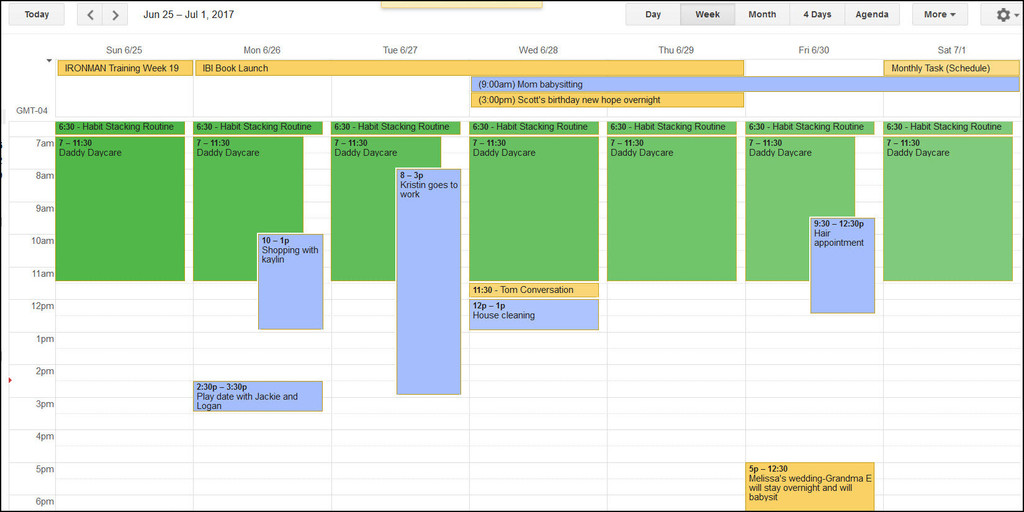
#2. Add Your “Biggest Rocks” First
As a reminder, my current five focuses (in order of priority) are:
- being present with friends and family;
- completing an IRONMAN race;
- writing and marketing my books;
- increasing web traffic to my blog, DevelopGoodHabits.com, and converting these visitors into email subscribers;
- fixing and updating sections of my home.
I have a good amount of flexibility with 4 out of 5 of these projects because I set my own hours. But I also prefer that none of these goals conflict with one another.
Specifically, my goal every week is to make sure that goal #2 (the IRONMAN race) doesn't intrude into goal #1 (being present with family and friends). So I always schedule the “big rock” of training for an IRONMAN first where it doesn't create conflict in my personal life.
Here's how this looks:
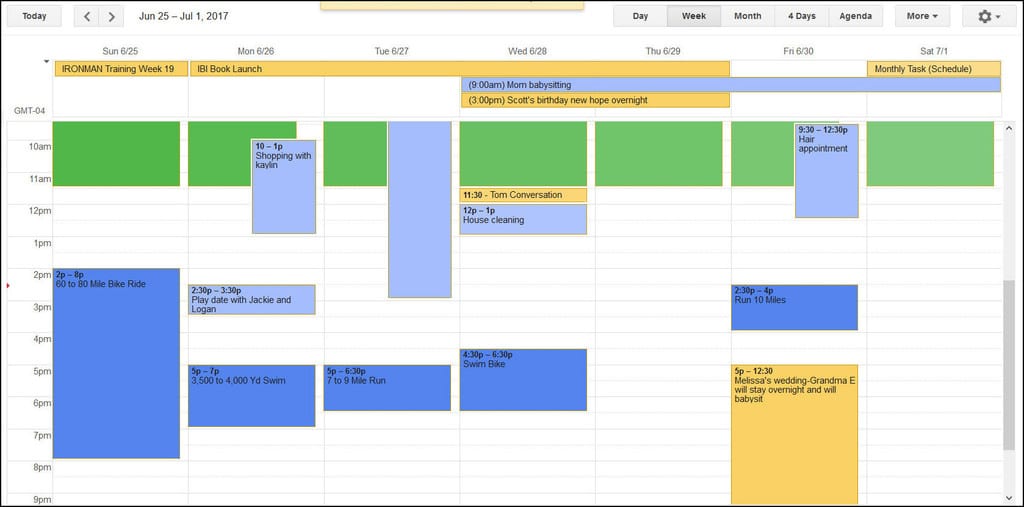
#3. Add Other “Big Rocks”
After scheduling the biggest rock into your life, you should look for other time blocks that can be dedicated to other important activities. For me, this means scheduling at least one hour of writing every day (goal #3).
Since I have to take care of my son in the morning (and hate getting up before 6:30), I simply schedule out blocks of time where I can find them during the week.
Here's how this looks:
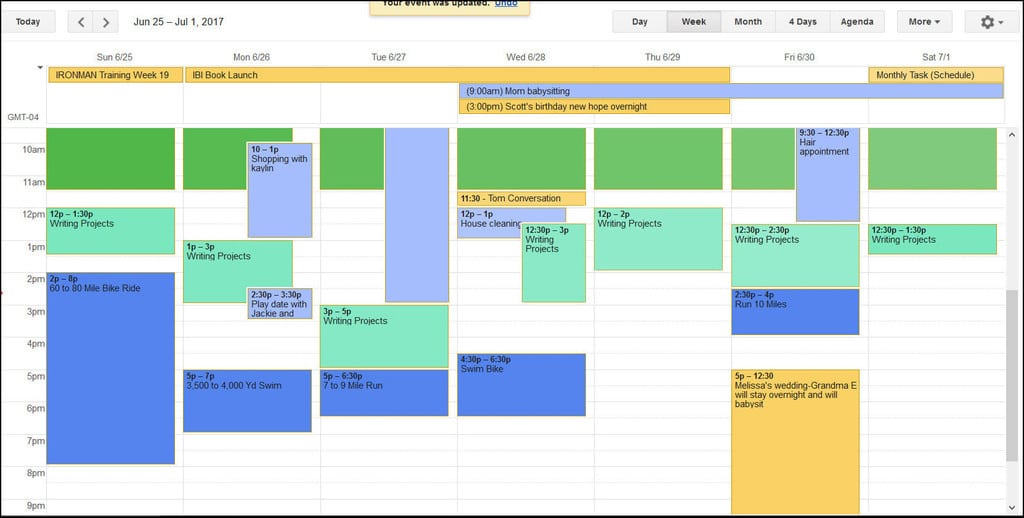
#4. Put “Theme Days” on Your Calendar
Theme days help you batch similar tasks together where you focus on a single aspect of your life. Unfortunately, I can't dedicate an entire day to one activity, but what I'll typically do is schedule one to two hours in my mornings to work on a single aspect of my business. (This usually happens when my son is napping.)
Here's how this looks:
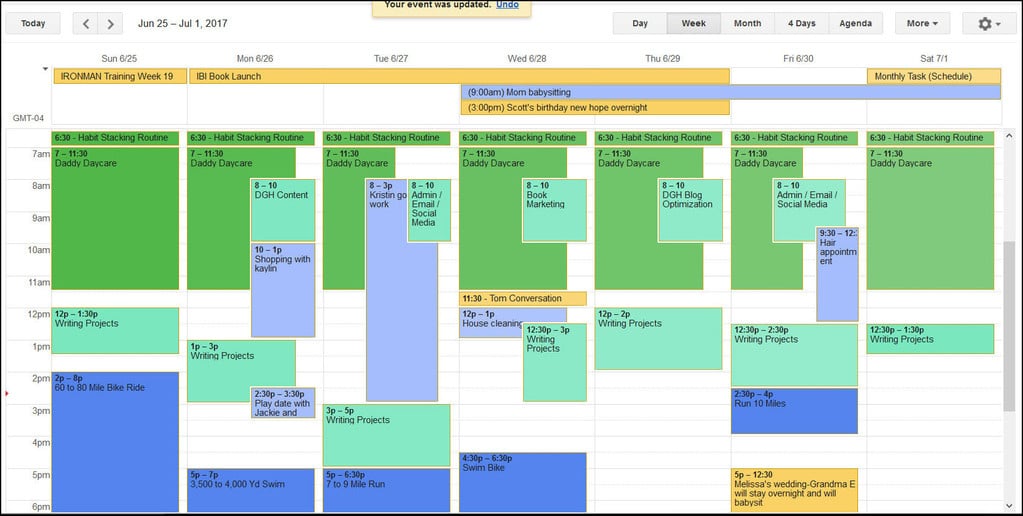
#5. Add Those Pebbles Into Your Schedule
As a reminder, the “pebbles” of your schedule are the tasks that are important, but are secondary to everything else. This means they will only be scheduled after you've blocked off time for the important stuff.
For instance, after scheduling my writing time, I'll go back over my calendar to schedule blocks of time to work on those important and urgent tasks. When scheduling, I'll add blocks for: the theme day, additional writing, flex time, and random administrative tasks.
Here's how this looks:
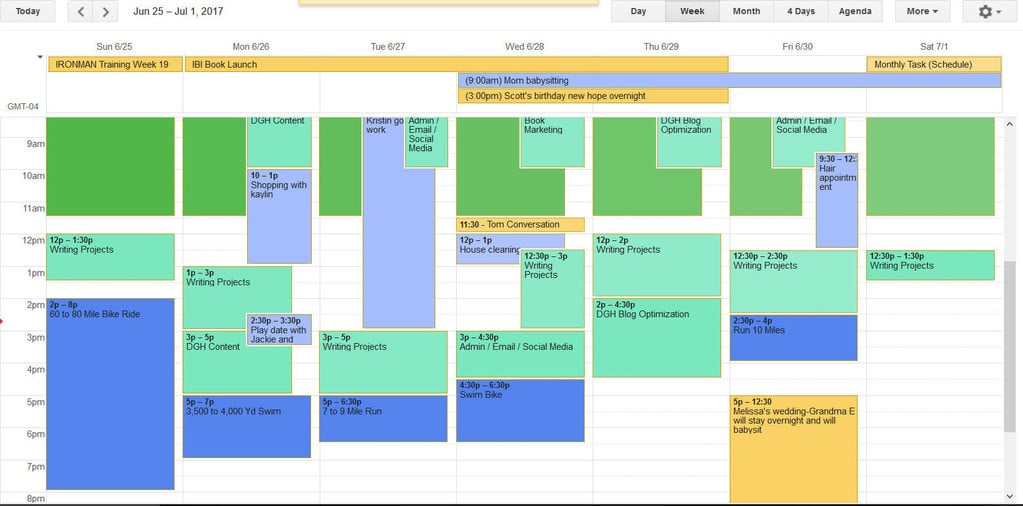
Well, that's a brief example of my weekly schedule!
I won't lie and say that it's a perfect representation of how to use the time blocking technique. But the lesson here is that you should always think critically about your important tasks and make sure that they are scheduled before anything else!
The Eisenhower Matrix [DOWNLOAD]
The Eisenhower Matrix, which is also known as the Urgent-Important Matrix, helps you prioritize your tasks based upon their urgency and importance. It also allows you to identify tasks that you should either delegate or leave undone.
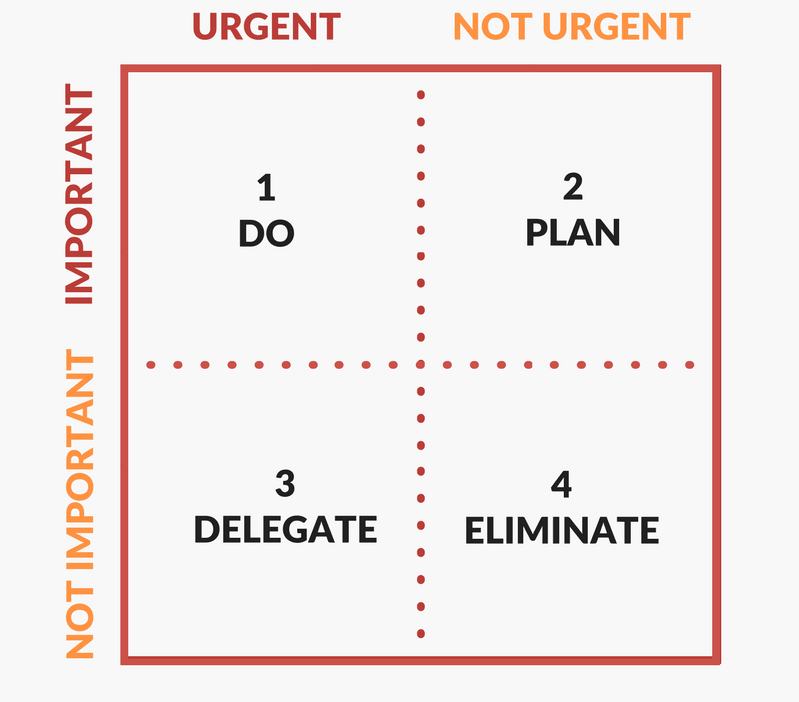
13 Steps to Build Habit Stacking Routine [Article]
ToDoist Walkthrough [Video]
The Todoist app is a program that I use to run my entire life. It's great for getting those tasks out of your head and into a central location that you can refer to daily. In this walkthrough, I briefly highlight the best features of Todoist and how you can use it to remember both your tasks and habits.
Evernote Walkthrough [Video]
Here's how to best use the Evernote app to store your best ideas and make sure that you're focusing on what's important in your life.

